As environmental consciousness rises, green building practices are becoming increasingly popular among homeowners and buyers alike. These sustainable practices not only reduce a home’s environmental impact but also significantly improve its market value. We will explore how adopting green building techniques can enhance home values and why they are a smart investment for homeowners. Find out here how green building practices improve home values. Talk to an expert for more information. Get a consultation.
Increased Energy Efficiency
Lower Utility Costs
One of the most immediate benefits of green building practices is the improvement in a home’s energy efficiency. By using energy-efficient materials and systems, homeowners can drastically reduce their energy consumption. Features such as solar panels, energy-efficient windows, and high-performance insulation lower utility bills. Homes that consume less energy are particularly attractive to buyers, as they promise long-term savings on heating, cooling, and electricity costs.
Meeting Market Demand
Today’s homebuyers are increasingly looking for energy-efficient homes. Many buyers are willing to pay a premium for homes that have lower operational costs and are eco-friendly. Green building practices help meet this demand by incorporating energy-efficient solutions that lower a home’s carbon footprint. In competitive real estate markets, homes with energy-efficient certifications, such as LEED or ENERGY STAR, tend to sell faster and at higher prices.
Improved Indoor Air Quality and Health Benefits
Healthier Living Environment
Green building practices focus not only on energy efficiency but also on improving indoor air quality. Traditional construction materials can release harmful chemicals and pollutants into the home, which can negatively impact the health of occupants. Green building practices prioritize the use of non-toxic, low-emission materials that contribute to a healthier indoor environment.
Moreover, green homes often include better ventilation systems that filter out allergens, pollutants, and moisture, creating a fresher living space. The improvement in air quality is particularly appealing to buyers with health concerns, allergies, or asthma.
Enhanced Marketability
As awareness grows about the link between home environments and health, homes that promote better indoor air quality have a competitive edge in the market. Prospective buyers are increasingly interested in homes that promote their well-being, making green homes more marketable and valuable. Offering a healthier living environment can lead to higher demand and, subsequently, higher property values.
Increased Durability and Lower Maintenance Costs
Long-Lasting Materials
Green building practices emphasize the use of high-quality, durable materials that are designed to last longer than traditional materials. Sustainable materials, such as recycled wood, reclaimed stone, and metal roofing, not only reduce the need for replacement but also minimize ongoing maintenance. By investing in these long-lasting materials, homeowners can save on repairs and replacements, further increasing the value of their property.
Reduced Maintenance Expenses
Many green homes feature sustainable landscaping techniques, such as rainwater harvesting, drought-resistant plants, and efficient irrigation systems. These practices reduce the need for excessive watering, fertilizers, and chemical treatments, lowering maintenance costs. This reduction in upkeep appeals to buyers looking for low-maintenance homes, which can significantly increase a home’s market value.
Environmental Responsibility and Buyer Appeal
Meeting Sustainable Standards
Homebuyers today are more eco-conscious than ever before. A growing number of buyers are actively seeking homes that reflect their values, particularly those focused on sustainability and environmental responsibility. Green homes are built to reduce energy consumption, conserve water, and minimize waste during construction. Features like solar panels, water-saving appliances, and composting systems not only appeal to environmentally conscious buyers but also demonstrate a commitment to sustainable living.
Higher Resale Value
As sustainability becomes an integral part of modern living, green homes are increasingly seen as future-proof investments. Studies have shown that eco-friendly homes tend to have higher resale values compared to traditionally built homes. Buyers are often willing to pay more for a home that includes green features, particularly if it’s certified by a recognized program like LEED or ENERGY STAR.
By implementing green building practices, homeowners can create a strong selling point that appeals to the growing market of eco-conscious buyers. This focus on sustainability can lead to faster sales and higher offers, boosting the home’s overall value.
Government Incentives and Tax Benefits
Financial Incentives for Green Homes
Many governments, both local and federal, offer financial incentives for homes that incorporate green building practices. These incentives often come in the form of tax credits, rebates, or grants, which can significantly offset the initial cost of implementing green features. Solar panel installations, energy-efficient appliances, and geothermal heating systems are just a few examples of upgrades that may qualify for incentives.
Adding Value Through Rebates and Credits
These incentives not only make green building practices more affordable for homeowners but also increase the overall value of the property. Buyers are often attracted to homes that come with energy-efficient upgrades, especially when these upgrades lead to lower monthly utility bills and potential rebates. As a result, green homes offer long-term financial benefits that can boost their resale value.
Conclusion
Green building practices offer a range of benefits that go beyond environmental responsibility. They increase home values by improving energy efficiency, enhancing indoor air quality, reducing maintenance costs, and appealing to eco-conscious buyers. In addition, government incentives make it easier for homeowners to invest in sustainable upgrades that further enhance the value of their property.
As more homebuyers prioritize sustainability and long-term savings, homes built with green practices will continue to rise in value. By adopting these practices, homeowners can enjoy immediate cost savings, healthier living environments, and stronger marketability, ensuring that their home remains a valuable asset for years to come. That’s how green building practices improve home values. Talk to an expert for more information. Get a consultation.


